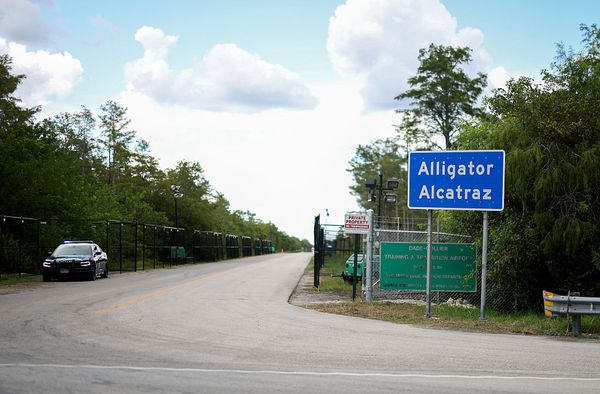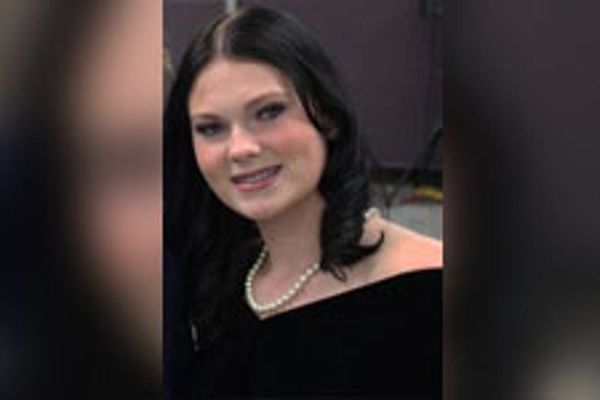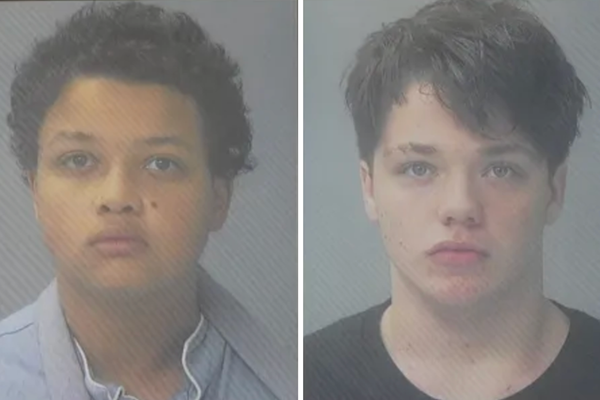Scanning the horizon, maintaining steady speed and throttle, watching the RPMs, and double-checking….altitude? It turns out the multi-tasking skillset of riding motorcycles translates to flying a helicopter, and with Rogue Aviation’s “Pilot Experience” program, anyone can try their hand at operating a helicopter, with no previous flight training required.
The "Pilot Experience" is specifically designed for gearheads who aren’t satisfied with just flying as a passenger in a helicopter for a scenic tour, but actually want to get their hands on the controls. As I was originally goaded into my fixed-wing aviation journey with the promise that "Motorcycle riders make the best pilots," Rogue Aviation owner and chief pilot James Baker doubled the ante by asserting that motorcycle riders gravitate towards rotorcraft and excel at it.
So with the heavy burden of defending the honor of all motorcyclists weighing on my shoulders, I had no choice but to take up James on his generous offer to come experience the "Pilot Experience" firsthand.
The day started at the Rogue Aviation headquarters at Long Beach Municipal Airport. The clubhouse is an inviting mix of brightly colored mid-century modern aesthetics with overtones of aviation themes, featuring a well-stocked lounge area and a classroom to review the mandatory SFAR (Special Federal Aviation Regulation) No. 73: Awareness Training and flight control safety briefing.



This training is specific to the Robinson R22 and R44 helicopters in the Rogue Aviation fleet, and participating in it is the key to gaining access to the flight controls for the pilot experience. The classroom portion evokes similarities to past motorcycle trackday schools I have attended, covering the basics about rotorcraft aerodynamics, how to operate the flight controls, and safety situations such as Rotor RPM Decay and Mast Bumping.
No idea what those are? Me neither until I took this safety briefing!
Just like "chair racing" or visualizing laps before taking to the racetrack, I had a moment to grab onto some imaginary controls in the mundane classroom setting and try to create some muscle memory of what I was to experience in the cockpit of a helicopter. My left hand grasped a ghost collective, and I mimicked the up and down motion of manipulating the overall pitch of the helicopter’s main rotor blades. In my right hand I wiggled thin air, where the hyper-sensitive cyclic would be that required smooth and minimal inputs to control the lateral movement of the helicopter. Finally, I pushed against invisible pedals with my feet, imagining the yawing of the tail rotor pedals connected to the pitch angle of the tail rotor.
Riding a motorcycle requires all of my limbs to act in unison to safely ride down the road, but a helicopter adds the complexity of three dimensions. I already felt overwhelmed, but James insisted it was all going to make sense in the cockpit as we marched down to the hangar for an introduction and a preflight check of the R44 helicopter.

I’ve had the privilege of being around a lot of noteworthy racecars and motorcycles for engine start, but nothing comes close to the adrenaline rush I felt as the Robinson R44 helicopter rumbled to life with me in the right seat—the seat of command in rotorcraft. My whole body rocked with the revolutions of the engine and the rotor, slow beats at first, and then the engine hit a quicker idle in a rhythmic thrum. Whether inside the humming cockpit or at the mercy of the maelstrom winds outside the R44, just simply being around an operating helicopter evokes feelings of excitement and danger. It is why Hollywood relies on the helicopter to add drama to any scene; it is a machine with commanding presence, even in its most basic operational functions.
James moved through the necessary pre-flight checklists with deft efficiency, and got us airborne before encouraging me to get on the controls, one-by-one. This layering technique of using and understanding each control, one at a time, was effective because operating a helicopter is basically multi-tasking on steroids, and the spoon-fed approach helped it all make sense. The procession of each control appeared to be a calculation as well, ending with the most sensitive cyclic control.
Not unlike a motorcycle, a helicopter needs constant inputs and monitoring to stay on course. With my hands on the collective, the cyclic, and my feet tenderly pushing on the pedals, I felt that "Holy shit, I’m doing it!" moment as we buzzed by the towers of downtown Long Beach and out over the Pacific Ocean. To be fair, I am of course not doing it all alone; James is still managing the bulk of the ancillary work to keep us safe in the air, but I get to enjoy the illusion all the same.
And it is exhilarating.




James is also a motorcycle rider and trackday enthusiast, so he liberally sprinkled in riding analogies to help connect all the dots in my biker brain. One that really stood out was when practicing slow flight or hovering at the helicopter pad, and the uncanny similarities to trying to static balance a motorcycle at a full stop. The same way momentum is a stabilizer on a motorcycle when zipping down the freeway, traveling at speed in a helicopter—in forward motion—smoothed out all the controls and was easy cruising. At a complete dead stop, however, a heightened sense of balance and coordination is required for both motorcycles and helicopters.
The "Hover Challenge" is designed to test that crucial skill; hovering in place with equilibrium is an essential technique all pilots must master. Not unlike static balancing a motorcycle, the key is to keep the eyes up and focused on an anchor point on the horizon, and then make micro adjustments on the controls to maintain that elusive balance. When James handed over the controls to me for the static hover, I held my breath and prayed for my hands to be still as a statue.
Sweat beaded on my forehead, but even my gentlest movements caused the helicopter to sway, and before I could recover the tipping point of oscillation, the imbalance was caught by James’ expert hands. What felt like an eternity of balancing was only a mere 15 seconds, not enough to win the coveted "Hover Challenge" tee-shirt. James asked if I wanted another shot: Hell yeah, I did!
Ready-set-HOVER!

The stopwatch clicked again, and I slowed my breaths, laser-eyed my target, and gingerly babied the cyclic as the balancing act began again. Tick, tick, tick, tick, tick. With more nerve, I tried to counteract the off-kilter wobbles that came. Tick, tick, tick. But once again, my inputs became too severe, upsetting the harmony of the R44 helicopter. Tick, tick. This time, however, I reached the benchmark for the coveted Hover Challenge tee shirt.
Flying a helicopter is one of those experiences I had never counted on in my life. And let’s be honest, the “helicopter ride” most motorcyclists often talk about isn’t the good kind. Just the privilege of riding in a helicopter for a scenic tour would be an all-time experience, but now I get to say I had my hand on the controls and actually flew the thing? I do feel a sense of pride.
It’s exactly the feeling James and the Rogue Aviation crew are going for.
They were inspired after doing the Porsche Experience, and while they don’t have aspirations of being race car drivers, spending half a day hustling a 911 GT3 RS around the track was a memorable event. They know that not everyone can make the commitment to earn a pilot’s license, but what if someone just wanted to try it with no strings attached? Who doesn’t want the bragging right of saying they flew a helicopter?
Like the Porsche Experience and many elite motorcycle track day schools, the "Pilot Experience" will be a pretty penny, starting at $897. Those who understand the immense cost of owning and operating certified aircraft, and especially rotorcraft, in Southern California can attest that this is actually a rather fair price for the time, attention, and exclusive nature of the experience.
I think James is onto something about us motorcyclists and flying rotorcraft, as we multitask at speed, master complex coordination, and sure, we like to flirt with danger. So if you are ready to try it all in a new dimension, the “Pilot Experience" at Rogue Aviation is waiting for you.








